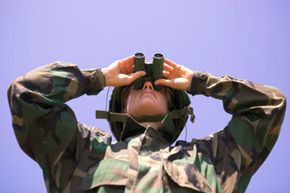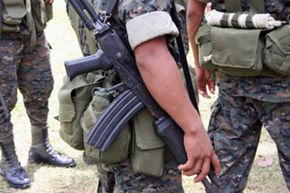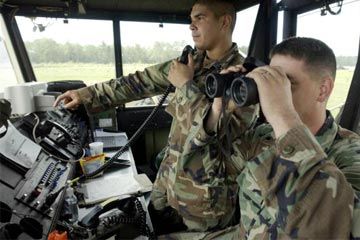Picture yourself deep behind enemy lines with a small detachment of three or four other soldiers. You're nestled behind shrubbery in a densely forested area where you can't be seen. You've been here for three days, binoculars trained on a target, watching for enemy movement. This is an Army reconnaissance job. These missions aren't glamorous, but that doesn't make them any less important than other duties of Army soldiers.
The primary goal of Army reconnaissance is to gather intelligence and scout out enemy areas [source: FAS]. We're not talking about espionage though, which involves spying within an enemy camp by infiltrating the opposition's ranks or pretending to be someone you're not. Reconnaissance is the collection of two types of intelligence from afar: terrain-oriented and force-oriented. Terrain-oriented recon focuses on the weather and terrain of a region to determine its potential effectiveness for incoming troops. Force-oriented recon centers on evaluating the combatants, activities, equipment, assets and high-payoff targets of an enemy force. After the soldier collects the information, it's relayed back to a commander or, in some cases, acted upon by the unit doing the reconnaissance. It depends on the nature of the situation and the experience of the soldiers.
Advertisement
Recon has been an important part of warfare since battles began. Gathering intelligence about a location has the potential to save lives and prevent further escalation of a conflict. Because of this versatility, many reconnaissance forces are also trained to handle counterterrorism, call in air strikes and secure areas with limited man-power. By their very nature, these missions aren't publicized or attributed to a particular group.
We'll examine how reconnaissance jobs work and how they affect combat scenarios, but first let's take a look at how you earn a spot in a recon unit.
Advertisement



